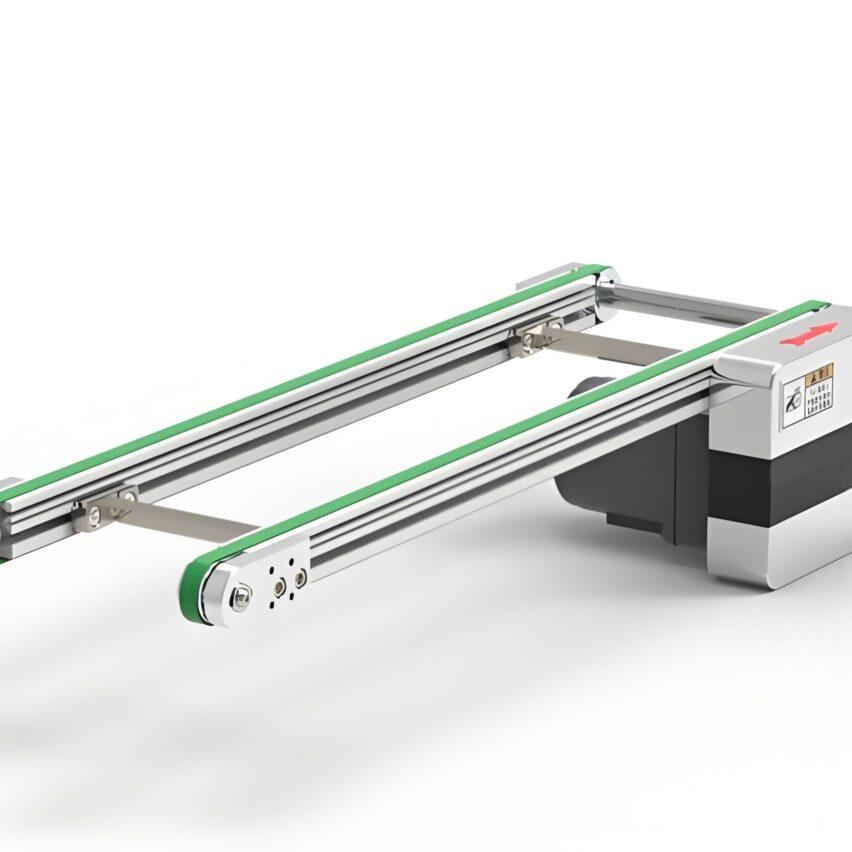As the core conveyor equipment in the field of industrial automation, the big difference in price often confuses purchasers---...Basic chains as low as $100/m, customised lines as high as $10,000/m.. This difference stems from the combined effect of multi-dimensional factors such as material, configuration and brand. In this article, we will combine market data and industry experience to analyse the true cost composition of the multiplier chain.
-
I. The price range: a four-stage leap from light to heavy loads
Based on the analysis of market quotations and manufacturers' solutions, multiplier chain prices can be divided into four tiers:
-
Basic simple type ($1000-2000/m)
Suitable for small home appliance assembly, light logistics sorting and other scenarios, load capacity <50kg, carbon steel structure + ordinary motor, lower speed accuracy, suitable for small and medium-sized enterprises with limited budget. -
Standard industrial ($2000-5000/m)
Covering 80% industrial needs (such as automotive parts, electronic appliances), load 50-500kg, configured with aluminium alloy frame + inverter motor, including the basic tensioning device, the cost performance is more outstanding. -
High-precision heavy-duty type ($5000-10000/m)
Used in the field of new energy battery and heavy machinery, stainless steel guide rail + servo drive system, supporting charged conveyor and automated docking, precision error ≤ ± 0.5mm. -
Customised complex (>$10,000/m)
Integration of robotics, vision inspection and other modules, applicable to medical equipment, precision electronic production lines, with non-standard design and secondary development.
-
II. Cost dismantling: the price code of core components
The price difference in the multiplier chain is essentially reflected in the technical tier of the components:
- Material CostCarbon steel<Aluminium alloy<Stainless steel (the price difference is as high as 30%). For example, nylon roller chain is about 10-30 RMB/m, while stainless steel corrosion-resistant chain soars to 247-320 RMB/m.
- drive systemOrdinary motor (+500-800RMB/m) vs servo drive (+2000-3000RMB/m). The latter realises 0.5-8m/s stepless speed regulation to meet precision beat control.
- Functional Module Premium::
- Automatic tensioning device: Incremental 10%-15%
- Elevating transplanting mechanism: Increased price 12%-18%
- Electrically Powered Conveyor Module: Price Increase 15%-20%
-
III. Brands and geography: hidden price variables
- Brand premiums: Imported brands (such as Germany iwis) than domestic high 20%-50%; domestic first-tier manufacturers (such as Link, Foster) than small factories high 15%-30%. For example, Link's standard line body offer 12,000 yuan / unit (about 10 metres), discounted unit price of 1,200 yuan / metre, while the same configuration of small factories may be as low as 800 yuan / metre.
- Geographical cost differentials: The basic line in Zhongshan area is about 800-1000 RMB/m, while the same specification in Shanghai costs 1200-1500 RMB/m, but the latter has more advantages in servo control technology.
-
IV. Procurement strategy: practical recommendations for balancing budget and efficiency
- Avoid over-provisioning
Light load scenarios do not need to choose the servo system - a Dongguan enterprise purchased 2,600 yuan / set (10 m) of standard line, through the optimisation of the layout to meet the production of small household appliances, than the original plan to save 47% cost. - phased escalation
Initially, carbon steel base line (RMB 2,000/m) is used with reserved interface, and later expanded to aluminium alloy + charged module (RMB 5,000/m) to reduce the risk of one-time investment. - Be alert to hidden costs
Some of the low-priced programme does not include installation and commissioning costs (accounting for about 15% of the equipment price), or the use of non-standard accessories lead to the doubling of maintenance costs in the later stages. It is recommended to be clear when signing the contract:
- Warranty period (1 year or more preferred)
- Accessory commonality (e.g. roller compatibility with national standards)
- Tensioner maintenance intervals
-
V. Future trends: how technology iteration affects prices
The current multiplier chain is experiencing polarised development:
standardisationDriving down the price of the base model (181 TP3T in 2025 vs. 2023), and theintellectualisePulling up the price of high-end models (production line with integrated AI quality inspection module exceeds 20,000 RMB/m). It is worth noting that modular design is becoming the new balance point - by replacing the roller set (accounting for about 5% of the total cost) can be achieved 2.5 times the speed of the chain and 3 times the speed of the chain conversion, significantly extending the life cycle of the production line.
Ask yourself the core question.
Q1: How can SMEs procure multiplier chains with a limited budget?
→Choose light duty carbon steel cable body + reserved upgrade interfaceThe first priority is given to domestically produced equipment in the range of $2000-3000/m to avoid paying for redundant features.
Q2:Why is there a difference of several times in the quotation of the same parameter of the speed chain?
→Material (e.g. nylon rollers vs. steel rollers) and drive system (normal motor vs. servo motor) are the main factorsIn addition, it is necessary to check whether the modules for automatic tensioning and lifting and transplanting are included.
Q3:What industries are suitable for purchasing $10,000 high-capacity production lines?
→New energy batteries (explosion-proof required), medical equipment (sterile environment), precision electronics (micron-level positioning)The high precision and functional integration can bring >30% performance improvement in such scenarios.













